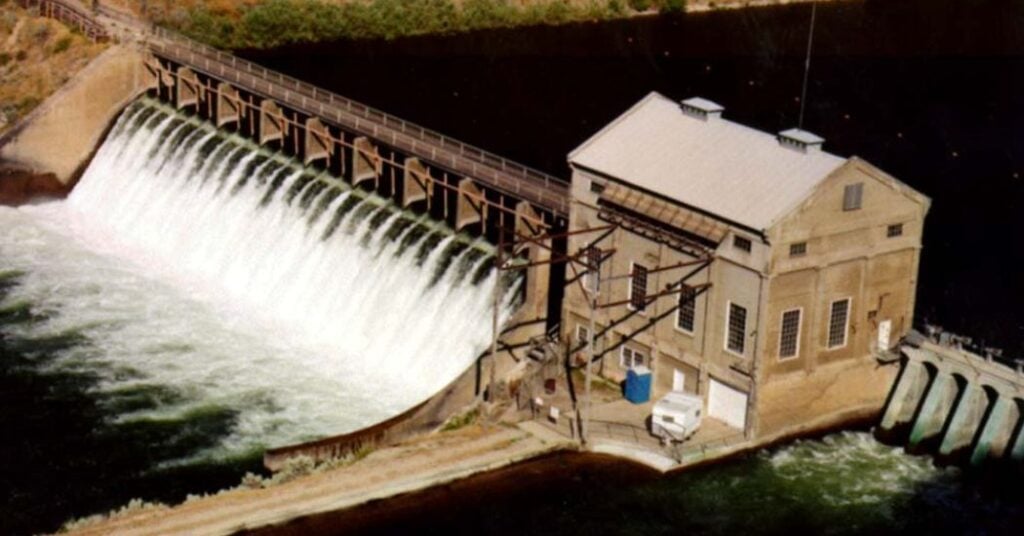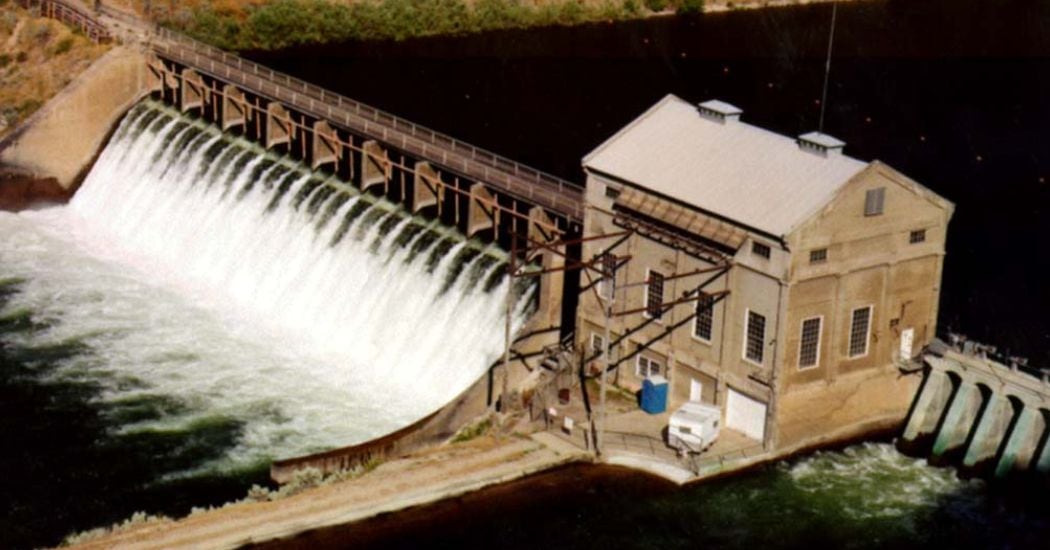We’ve been pouring concrete all over Idaho for YEARS. And let us tell you, concrete has played a HUGE role in shaping our state’s architectural landscape.
From the early days of statehood to the modern marvels we see today, concrete has been the foundation (pun intended!) of Idaho’s built environment. So, let’s take a little trip down memory lane and explore the FASCINATING history of concrete use in Idaho architecture!
The Evolution of Concrete in Idaho
Early Use of Concrete in Idaho Architecture
Believe it or not, concrete has been around in Idaho since WAY before it was even a state. Early settlers used a primitive form of concrete (made with local lime and gravel) to build foundations and walls for their homes and buildings.
But it wasn’t until the early 20th century that concrete really started to TAKE OFF in Idaho architecture.
Introduction of Concrete in the 20th Century
In the early 1900s, as Idaho’s population boomed and cities grew, concrete became the GO-TO material for everything from sidewalks and streets to bridges and buildings.
Why? Because concrete was STRONG, DURABLE, and relatively cheap compared to other building materials like stone or brick. Plus, it could be molded into all sorts of shapes and sizes!
Notable Early Projects

Some of the earliest and most notable concrete projects in Idaho include:
- The Boise River Diversion Dam (1908)
- The Idaho State Capitol Building (1920)
- The Owyhee Hotel in Boise (1924)
These iconic structures showcased the VERSATILITY and BEAUTY of concrete, and set the stage for its widespread use in Idaho architecture.
Key Architectural Styles Utilizing Concrete
Over the years, concrete has been used in a WIDE RANGE of architectural styles in Idaho. Let’s take a look at a few of the most notable:
Modernism and Concrete
In the mid-20th century, modernist architects FELL IN LOVE with concrete. They loved its clean lines, simple forms, and raw, industrial aesthetic.
Some prime examples of modernist concrete architecture in Idaho include:
- The Morrison Center at Boise State University (1984)
- The Boise Public Library (1973)
- The Idaho Falls Civic Auditorium (1952)
These buildings embraced the HONEST EXPRESSION of concrete, with exposed structural elements and minimal ornamentation.
Mid-Century Design Influences
The mid-century modern style (think Mad Men, but in Idaho) also made HEAVY USE of concrete. Homes and buildings from this era often featured concrete block walls, flat or low-pitched roofs, and large windows.
Some standout examples of mid-century modern concrete design in Idaho include:
- The Boise Art Museum (1937)
- The Sun Valley Lodge (1936)
- Numerous post-war ranch homes in suburban developments
These designs celebrated the SIMPLICITY and FUNCTIONALITY of concrete, while still maintaining a sense of style and sophistication.
Contemporary Applications of Concrete
Today, Idaho architects are still finding NEW AND INNOVATIVE ways to use concrete. From polished concrete floors to precast concrete panels, the material is more VERSATILE and VISUALLY APPEALING than ever.
Some recent examples of contemporary concrete architecture in Idaho include:
- The Boise State University Alumni and Friends Center (2016)
- The Idaho Central Credit Union Arena in Moscow (2021)
- The Eighth & Main Building in Boise (2014)
These buildings showcase the SLEEK, MODERN AESTHETIC of concrete, while also incorporating sustainable design features and cutting-edge technologies.
Case Studies of Notable Concrete Structures
Now, let’s take a closer look at some SPECIFIC EXAMPLES of notable concrete structures in Idaho:
Residential Buildings in Sandpoint
In the resort town of Sandpoint, you’ll find some STUNNING examples of concrete homes that blend seamlessly with the natural surroundings. Take the LEED Gold-certified “Cliff House,” for instance.
Perched on a rocky bluff overlooking Lake Pend Oreille, this home features exposed concrete walls, polished concrete floors, and even a concrete kitchen island! The use of concrete helps to regulate temperature and reduce energy costs, while also providing a SLEEK, MODERN AESTHETIC.
Commercial Buildings in Idaho Falls
Idaho Falls has seen a BOOM in commercial development in recent years, and concrete has been at the forefront of many of these projects. One standout example is the Idaho Falls Hobby Lobby store.
This massive, 55,000-square-foot building features precast concrete walls and a polished concrete floor. The use of concrete not only provides a DURABLE, LOW-MAINTENANCE SURFACE, but also helps to REFLECT LIGHT and create a bright, airy atmosphere inside the store.
Historic Structures and Their Renovations
Of course, we can’t talk about the history of concrete in Idaho architecture without mentioning some of the state’s most ICONIC HISTORIC STRUCTURES.
Take the Idaho State Capitol Building, for example. Built in 1920, this grand structure features a concrete and steel frame, clad in locally sourced sandstone. In recent years, the Capitol has undergone extensive renovations to repair and restore its concrete elements, ensuring that it will continue to STAND STRONG for generations to come.
Another notable historic renovation project is the Owyhee Hotel in Boise. Originally built in 1924, this concrete and brick structure recently underwent a MAJOR OVERHAUL to convert it into luxury apartments. The project involved repairing and restoring the original concrete elements, while also incorporating NEW CONCRETE FEATURES like polished floors and custom countertops.
Sustainable Design Practices with Concrete
As Idaho continues to grow and develop, sustainability has become an INCREASINGLY IMPORTANT consideration in architectural design. And guess what? Concrete can be a SURPRISINGLY SUSTAINABLE material when used thoughtfully.
Use of Recycled Materials
One way Idaho architects are making concrete more sustainable is by incorporating RECYCLED MATERIALS into the mix. This can include things like:
- Fly ash (a byproduct of coal combustion)
- Slag cement (a byproduct of steel production)
- Recycled glass or plastic aggregates
By using these recycled materials, architects can REDUCE THE CARBON FOOTPRINT of concrete and keep waste out of landfills.
Energy Efficiency Considerations
Another way concrete can contribute to sustainable design is through its THERMAL MASS properties. Basically, concrete has a high capacity to absorb, store, and release heat slowly over time.
What does this mean for buildings? It means that concrete walls, floors, and roofs can help to REGULATE INDOOR TEMPERATURE and reduce the need for heating and cooling. This can lead to SIGNIFICANT ENERGY SAVINGS over the life of a building.
Many Idaho architects are now incorporating PASSIVE SOLAR DESIGN principles into their concrete buildings, using strategic placement of windows and thermal mass to maximize natural heating and cooling.
Innovations by Local Architects
Idaho is home to some INCREDIBLY TALENTED and INNOVATIVE architects who are pushing the boundaries of what’s possible with concrete. Let’s take a look at a few examples:
Pioneering Approaches to Concrete Usage
One Idaho architect who is doing GROUNDBREAKING WORK with concrete is Bruce Poe of Modus Architecture in Boise. Poe has developed a unique system of insulated concrete forms (ICFs) that allow for the creation of HIGHLY ENERGY-EFFICIENT and DISASTER-RESISTANT buildings.
Poe’s ICF system, called “Modular Integrated Construction” (MIC), involves stacking pre-insulated concrete blocks like Legos to form the walls of a building. The blocks are then filled with reinforced concrete to create a SUPER-STRONG and SUPER-INSULATED structure.
Unique Combinations with Other Materials
Another Idaho architect who is doing EXCITING THINGS with concrete is Heather Soener of Soener Design in Ketchum. Soener is known for her INNOVATIVE USE of concrete in combination with other materials like wood, steel, and glass.
One of Soener’s most STUNNING PROJECTS is the “River House” in Hailey. This home features a MASSIVE, board-formed concrete fireplace that serves as the centerpiece of the living room. The rough, textured surface of the concrete is juxtaposed with smooth, polished wood floors and sleek, modern furnishings, creating a VISUALLY STRIKING and TACTILELY INVITING space.
Aesthetic Qualities of Concrete in Architecture
Of course, we can’t talk about concrete in architecture without mentioning its AESTHETIC QUALITIES. Concrete has a unique TEXTURE and VISUAL APPEAL that sets it apart from other building materials.
Textures and Finishes
One of the coolest things about concrete is the WIDE RANGE OF TEXTURES and FINISHES that are possible. From smooth and polished to rough and board-formed, concrete can take on a VARIETY OF LOOKS and FEELS.
Some popular concrete finishes in Idaho architecture include:
- Exposed aggregate (where the surface is ground down to reveal the colorful stones and pebbles in the mix)
- Stamped or imprinted patterns (where the surface is textured to look like brick, stone, or other materials)
- Stained or dyed colors (where pigments are added to the mix or applied to the surface)
Color and Form in Design
In addition to texture, concrete can also be used to create STRIKING VISUAL EFFECTS through color and form. Idaho architects are using colored concrete, custom formwork, and even 3D printing to create UNIQUE and EYE-CATCHING designs.
Some examples of INNOVATIVE USES OF COLOR and FORM in Idaho concrete architecture include:
- The “Canyon House” in Boise, which features a bright red concrete wall that snakes through the interior and exterior of the home
- The “Boise Watershed” education center, which has a curved, green-tinted concrete facade that mimics the flow of water
- The “Sandpoint Marina” building, which uses white concrete and geometric forms to create a MODERN, NAUTICAL-INSPIRED design
The Future of Concrete in Idaho Architecture
So, what does the FUTURE HOLD for concrete in Idaho architecture? Based on current trends and emerging technologies, it looks like concrete will continue to play a MAJOR ROLE in shaping our built environment.
Trends in Sustainable Construction
One of the biggest trends we’re seeing in Idaho (and around the world) is a push towards MORE SUSTAINABLE CONSTRUCTION PRACTICES. And concrete is poised to be a KEY PLAYER in this movement.
Some of the ways we expect to see concrete used more sustainably in the future include:
- Increased use of recycled and low-carbon materials in the mix
- More widespread adoption of insulated concrete forms and other energy-efficient building systems
- Greater use of permeable concrete pavement to reduce stormwater runoff and heat island effects
Anticipated Innovations and Developments
We’re also excited to see how NEW TECHNOLOGIES and INNOVATIONS will continue to push the boundaries of what’s possible with concrete. Some developments we’re keeping an eye on include:
- 3D printed concrete structures (like houses and bridges)
- Self-healing concrete (that can repair its own cracks and damage)
- Photocatalytic concrete (that can absorb pollution and self-clean)
As these technologies become more ADVANCED and ACCESSIBLE, we expect to see them integrated into more and more Idaho architecture projects in the coming years.
Conclusion
From the early days of statehood to the cutting-edge designs of today, concrete has been a CONSTANT PRESENCE in Idaho architecture. Its STRENGTH, DURABILITY, and VERSATILITY have made it a go-to material for architects and builders looking to create FUNCTIONAL and VISUALLY STRIKING structures.
But beyond its practical benefits, concrete has also played a SIGNIFICANT ROLE in shaping Idaho’s ARCHITECTURAL IDENTITY. From the modernist masterpieces of the mid-20th century to the sustainable and innovative designs of today, concrete has been a CANVAS for Idaho architects to express their creativity and push the boundaries of what’s possible.
As we look to the future, we have no doubt that concrete will continue to EVOLVE and INSPIRE new generations of Idaho architects. And as your local concrete experts, Boise Concrete Contractor will be here to help bring those visions to life.
So the next time you’re driving around Idaho and you see a STUNNING CONCRETE BUILDING, take a moment to appreciate the RICH HISTORY and EXCITING FUTURE of this incredible material. And if you’re ever in need of some SERIOUSLY SKILLED CONCRETE WORK for your own project, you know who to call! 😉
